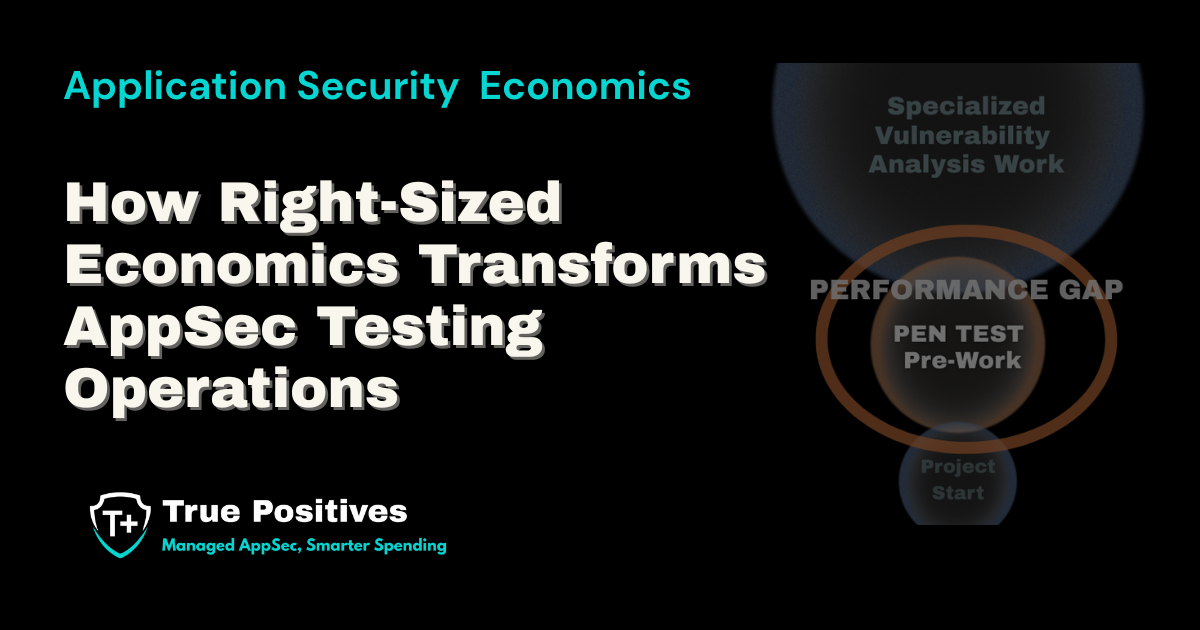API Security Best Practices and Testing Tools
In today's interconnected digital landscape, Application Programming Interfaces (APIs) play a crucial role in enabling different software systems to communicate and share data seamlessly.
However, with the rise in API usage, security risks have also surged, making API security focal point for appsec teams. In this blog we will take a deeper look at some API security best practices as well as the testing tools available to help protect your APIs.
Understanding API Security
APIs, while incredibly powerful, can be vulnerable to various security threats when not properly secured. These vulnerabilities can lead to data breaches, unauthorized access, and other cyber threats. As a result, it is essential to implement robust security measures to protect your APIs from potential attacks.
Let's take a look at some of the most common API security threats.
Common API Security Threats
When it comes to securing your APIs, it helps to know what you're up against - here are some common threats:
- Injection Attacks: These include SQL, NoSQL, and Command Injection, where attackers insert malicious code into your API.
- Broken Authentication: Weak authentication mechanisms can allow attackers to assume the identity of legitimate users.
- Sensitive Data Exposure: Improper handling of sensitive data can lead to unauthorized access and data leaks.
- Lack of Rate Limiting: Without proper rate limiting, APIs can be susceptible to denial-of-service (DoS) attacks.
- Broken Access Control: Flaws in access control can allow unauthorized users to access restricted resources.
Understanding these threats is the first step in securing your APIs. But how do you actually go about protecting them?
Best Practices for API Security
To ensure your APIs are secure, adopting a comprehensive approach encompassing various best practices is essential. Here are some key practices for you to follow:
1. Use Strong Authentication and Authorization
Firstly, always ensure that only authorized users can access your APIs. Implementing strong authentication and authorization mechanisms is crucial. Use OAuth, JWT (JSON Web Tokens), or other secure methods to verify identities and permissions.
This way, you can be confident that those accessing your API are who they claim to be.
2. Encrypt Data in Transit
Next, you should always encrypt data both in transit and at rest. Use TLS (Transport Layer Security) to protect data being transmitted between the client and the server. For data at rest, ensure you use robust encryption standards. This helps in protecting sensitive information from eavesdropping and tampering.
3. Implement Rate Limiting
Rate limiting controls the number of requests a client can make to your API within a certain timeframe. This helps in preventing abuse and ensures your API remains available to legitimate users. Implementing rate limiting is like having a bouncer at a club—only a certain number of people can get in at a time.
4. Validate Input
Never trust incoming data blindly. Always validate and sanitize inputs to prevent injection attacks. By doing this, you’re making sure that the data your API processes is clean and secure. Use parameterized queries and avoid concatenating strings for database queries.
5. Use API Gateway
API gateways act as intermediaries between clients and your API services. They can handle tasks like rate limiting, authentication, and data aggregation. Think of them as the traffic controllers for your API ecosystem that ensure everything runs smoothly and securely.
6. Implement Logging and Monitoring
Always keep an eye on your API traffic. Monitoring and logging activities can help you detect suspicious behavior early. Set up alerts for unusual patterns, such as a spike in requests from a single IP address. Be sure to regularly review your logs to identify potential threats.
7. Apply the Principle of Least Privilege
Another essential practice is implementing the Principle of Least Privilege (PoLP). This principle involves giving users and systems the minimum level of access—or permissions—needed to perform their tasks. By doing so, you limit the potential damage that can be caused by accidental or malicious misuse of your APIs.
8. Regularly Update and Patch
Just like any other software, your APIs need regular updates and patches. Make it a habit to keep your API components up to date with the latest security patches. This helps in protecting against known vulnerabilities.
API Security Testing Tools
Testing your APIs for security vulnerabilities is as important as implementing security best practices. There are various tools can help you identify and mitigate potential threats.
Here are a few of the most popular API security testing tools you might want to consider:
1. OWASP ZAP (Zed Attack Proxy)
To start, let's look at OWASP ZAP. This is an open-source tool designed for finding vulnerabilities in web applications, including APIs. It’s user-friendly and offers automated as well as manual testing capabilities. You can use it to scan your APIs for common security issues and get detailed reports.
OWASP ZAP Features:
- Automated scanners
- Passive scanning
- Intercepting proxy for manual testing
- Wide range of plugins and extensions
2. Burp Suite
Then there's Burp Suite, a comprehensive tool for web application security testing. It includes features for scanning APIs, intercepting requests, and analyzing responses. Burp Suite is widely used by security professionals for its powerful capabilities and detailed reporting.
Burp Suite Features:
- Intercepting proxy
- Scanner for automated testing
- Intruder for custom attacks
- Extensible with various plugins
3. Postman
Next up is Postman. While it's widely known as an API development tool, Postman also offers features for testing API security. You can create automated tests to check for vulnerabilities and ensure your APIs are functioning as expected. Postman’s intuitive interface makes it easy to get started with security testing.
Postman Features:
- Automated testing
- Environment management
- Detailed reporting
- Integration with CI/CD pipelines
4. SoapUI
Another popular option is SoapUI which is a functional testing tool for APIs, allowing you to create and execute tests for REST and SOAP APIs. It also provides security testing features to help you identify vulnerabilities.
SoapUI Features:
- Functional testing
- Security testing
- Load testing
- Detailed reporting
5. Insomnia
Insomnia is another popular tool for API development and testing. It supports automated testing and offers various plugins to extend its functionality. You can use Insomnia to perform security tests and ensure your APIs are robust and secure.
Insomnia Features:
- Environment management
- Automated testing
- Detailed reporting
- Plugin support
API Security – Putting It All Together
Securing your APIs is an ongoing process. By following best practices and using the right testing tools, you can significantly reduce the risk of security breaches. Remember, the goal is to create a secure environment for your APIs to operate, ensuring they can handle sensitive data without being compromised.
To wrap things up, here’s a quick recap of what we’ve covered:
- Understand the common threats: Be aware of injection attacks, broken authentication, data exposure, and lack of rate limiting.
- Follow best practices: Implement strong authentication, encrypt data, validate input, use rate limiting, employ API gateways, monitor activity, and keep APIs updated.
- Implement the Principle of Least Privilege: Ensure users and systems have only the access they need, reducing potential security risks.
- Use testing tools: Utilize tools like OWASP ZAP, Postman, Burp Suite, and Insomnia to regularly test your APIs for vulnerabilities.
Remember, the security of your APIs is not just about protecting data—it's about maintaining trust with your users and clients. A secure API fosters confidence and reliability, which are essential for the success of any digital platform. So, make API security a priority and leverage the best practices and tools at your disposal to keep your APIs safe and sound.
.png)
About True Positives
True Positives is a cybersecurity services firm focused on application security. Our team possesses over 100 years of combined enterprise AppSec and DevSecOps expertise. Through our flagship managed services, organizations access enterprise-grade security testing without internal overhead. Our value-added reseller partnerships enable enterprises to construct robust in-house programs with proven tooling and implementation expertise. Serving clients in either capacity, we focus on strengthening security assurance while maintaining development velocity and optimizing program costs. Contact us to discuss your security testing requirements.
%2008%2014%202025%20(4).webp?width=1200&height=400&name=Copy%20of%20%20T%2B%20Logo%20Webpage%20Header%20(500X170)%2008%2014%202025%20(4).webp)


